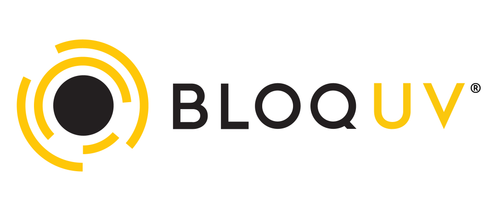5 SURPRISING WAYS YOU ARE BEING EXPOSED TO THE SUN'S RAYS
The sun is responsible for life on Earth. It allows photosynthesis, moves the atmosphere, and keeps bodies of water warm. We can thank the sun for our biological sleep cycle, vitamin D, and stress relief.
However, too much of the sun is harmful to us and is associated with serious risk factors. People with pale skin can only stay in the sun for 15 to 20 minutes before ultraviolet rays become dangerous. Aside from getting painful sunburn and rashes, overexposure to UV light increases the chances of skin cancer.
UV rays are stronger when the sun is highest in the sky, in places with a thinner ozone layer, and in places closer to the equator. Bright, summer days aren't the only time you can be exposed to UV rays.
Here are five surprising ways the sun's harmful rays can reach you.
1. EYE DAMAGE
We often only think of our skin being damaged by the sun, but eye damage can be caused by the sun's harmful rays. Specifically, the retina and cornea can be damaged.
The retina is full of cones and rods that create images of the world. Prolonged unprotected sun exposure can cause solar retinopathy, which also occurs if you gaze at an eclipse.
Recovery from solar retinopathy takes between three and six months. The retina will recover, but you could be stuck with eyesight deficits.
The cornea is a transparent layer on the eye. Exposure to UV rays can form bumps on the cornea's edge. Without eye protection, these bumps eventually cover the cornea.
The layer will become cloudy and your vision will be blurry.
The best way to stop eye damage from UV light is to wear sunglasses. Large sunglasses will also protect the skin around your eye from wrinkles and skin cancer.
2. RAINY DAYS
You're at risk of UV ray exposure even on cool, rainy days. The two most common types of UV rays: UVA and UVB rays. UVA light passes through clouds, fog, rain, and other weather conditions. This type of sun ray travels to the deepest layer of the skin while UVB rays only harm the top layers.
You should wear sunscreen and sunglasses even when it's not sunny or hot outside.
3. REFLECTED LIGHT
UV light bounces off of reflective surfaces like rain. Even though you may not see the sun or feel it, UVA rays can bounce off of the wet ground and penetrate your skin.
Other surfaces UV rays reflect off of are light-colored sand, sea foam, snow, and mirrors.
4. IN THE CAR
The front windshield of your car filters out almost all UV rays. However, your back and side windows are made of thicker, non-laminated glass. UVB light is mostly blocked, but UVA light passes through these windows.
Trains, buses, and planes also don't protect you from sun damage and UVA exposure.
You can install a special film on your car windows and the windows in your house to block UVA rays. Another option is to wear sunscreen, sunglasses, and sun protective clothing
5. ELEVATED AREAS
The atmosphere gets thinner as you reach higher elevations. Thinner atmospheres are more concentrated with UV rays. You're at risk of more severe damage from the sun if you live at a high elevation.
The amount of UV rays increases by 10% to 12% with every 1,000 meters above sea level.
Make sure you protect yourself from UV rays when you climb mountains or travel at high elevations. UV light is significantly stronger on planes, which usually reach 38,000 feet or over 11,000 meters above the ground.
LIMITING EXPOSURE TO THE SUN'S RAYS
The most common ways to minimize damage from the sun's rays are sunscreen and sunglasses. You can also wear long-sleeved shirts and long pants to fully cover your skin. There are long-sleeved shirts made of light fabrics for the warmer months.
To protect your face, you can wear a bandana to cover your ears, neck and/or head. Don't forget to apply sunscreen to your face and ears. If you're outside for a long time, reapply sunscreen every couple of hours.
Use a broad-spectrum coverage sunscreen and avoid ones that include trolamine salicylate and PABA.
Did you find this article helpful? Check out our store for sun protective accessories.

